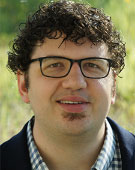The Swierk group is broadly interested in understanding and controlling radical reactions initiated by single electron transfer, most often via photo- or electrochemistry. Use of spectroscopic and electroanalytical methods is central to much of the research in the group. One major area of emphasis within the group deals with understanding photoredox reactions. This class of reactions is transforming modern synthetic chemistry by substituting hard-to-handle, expensive and toxic reagents (e.g., HSnBu3) with short-lived excited states that can themselves be potent oxidants or reductants. Challenging bond-forming reactions can be accessed with this chemistry and, often, a variety of functional groups can be tolerated. Despite the promise of photoredox methods, a mechanistic understanding is lacking. Using a variety of experimental approaches and kinetic modeling, the Swierk group seeks to completely characterize photoredox catalytic cycles and identify the kinetically limiting steps, with an eye towards informing the design of new reactions. A second area of emphasis deals with electrosynthetic reactions and seeks to understand the role of electrode materials and double-layer structure on novel, bond-forming reactions initiated electrochemically. Systems of interest range from the desulfurization of fuel oils to small molecules for pharmaceutical applications. Standard electrochemical methods (e.g., CV, LSV, impedance) are partnered with the development of new spectroelectrochemical methods. There is also an NIH-funded effort in the lab focused on the safety and photochemistry of tattoo inks. Despite the popularity of tattoos and the billions of dollars spent every year on laser tattoo removal, we do not understand how tattoo inks transform under illumination and what risks they may pose to human health. The Swierk group utilizes a transdisciplinary approach that draws from analytical chemistry, materials science and cell biology to address the simple question, "How do tattoos fade?" In addition to the major project areas described above, there is also work in the group on the synthesis of carborane transition metal complexes for photophysical and catalytic applications, deep eutectic solvents for organic reactions, and photoelectrochemical methods for initiating radical reaction mechanisms.
Background
Education
Research Interests
Awards
Research Profile
Related News Stories